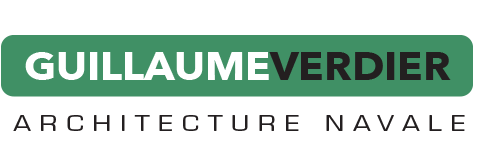An ambitious collaboration serving the new generation IMOCA
Quentin Lucet / VPLP: “Although each firm disposes of all the competences to succeed, the tools developed internally by each and every one are different and enabled us to analyse calculations with complementary sensitivities. This is a great advantage.
At VPLP, we have open sea multihull expertise and the developments we’ve set up for ClassC are very sophisticated, from a hydro or techno point of view. Such competences were put to good use by the team composed of around fifteen people to design Safran’s foils.”
Benjamin Muyl Design / VERDIER: “It went very well although we had some considerable doubts about what to do on these foils or what type of rigging to choose.
How does one win the Vendée Globe? Should we favour speed or reliability? There were some debates but that’s normal: design choices but also strategic choices that were made by the entire team.”
How is it possible to collaborate with different teams that share the same quest for performance?
Xavier Guisnel / VPLP: “Although all the boats face the same class rules constraints, each project was quite different in its design stage. According to skippers’ and teams’ experiences, their history, specifications change, concerns, desires… There are no two identical boats.”
Benjamin Muyl Design / VERDIER: “There is one basic principle: if the ideas come from us, we can share them with the other teams. If they come from the teams, it’s confidential. You have to find the right balance between confidentiality and advising duty. What relates to security is shared for instance.
Between Banque Populaire and Safran, there was a common core of studies but the strategic choices weren’t always the same between both teams.”
Romaric Neyhousser / VERDIER: “We do not want to favour one team over another but some subjects can be delicate. Throughout project evolutions, teams ask questions which make us think and progress, and sometimes we make progress by finding answers to questions raised by teams that we would not have thought of. So it’s not always easy.”
Are you confident about the first navigations, coming soon?
Xavier Guisnel / VPLP: “We’re impatient! We’re finally going to see what all these developments give on the water, how the boats will behave with their foils in the sea…
Many of the questions we raised during the study stages will be answered in real sailing conditions.”
Romaric Neyhousser / VERDIER: “We are confident about the studies we did. We can go quite far but there are a certain number of aspects that are hard to pinpoint on paper: behaviour in unstable conditions, associated balance disturbances… There will probably be some adjustments.”
Daniele Capua / VPLP: “The design of the last IMOCAs was rather radical and the results on the water will provide answers about the relevance of what we imagined. We can’t wait to find out!”
Architects associated to the project:
– Guillaume Verdier Architecture Navale: Romaric Neyhousser / Benjamin Muyl / Hervé Penfornis and Guillaume Verdier / Len Imas and Romain Garo (CFD) / Clément Duraffourg (FEA) / Bobby Kleinschmidt (VPP) /Véronique Soulé (foil/VPP)
– Cabinet VPLP: Quentin Lucet / Xavier Guisnel (foil/VPP)/ Philibert Chesnay / Xavier Guilbaud / Simon Watin / Daniele Capua / Damien Doyotte and Vincent Lauriot Prevost
– Hydrocéan and Kiel University
Contacts Press :
VERDIER : Anne-laure Guilbaud
anne-laure@alg-conseil.com
+ 33 (0) 6 62 25 24 69
VPLP DESIGN : Anne Guillard
presse@vplp.fr
+ 33 (0) 6 83 17 04 72
